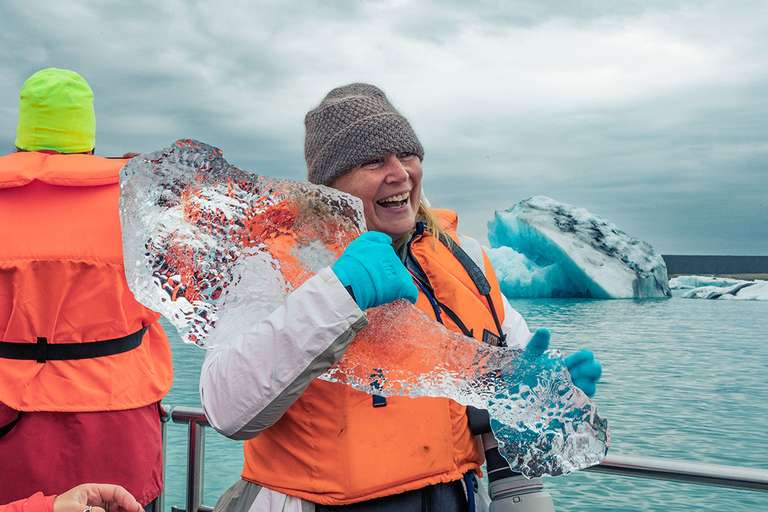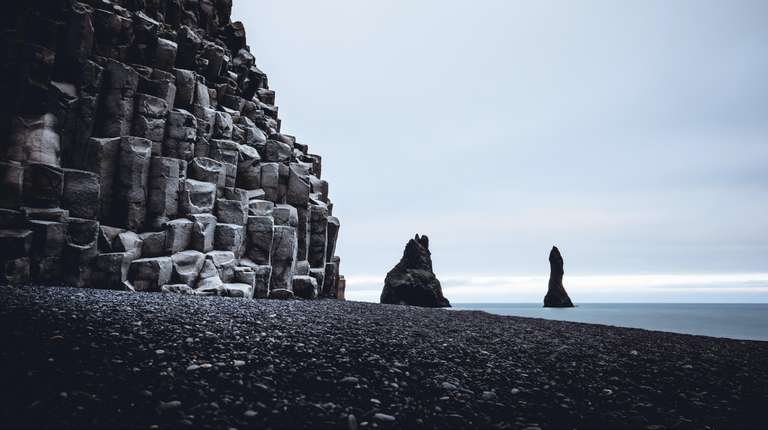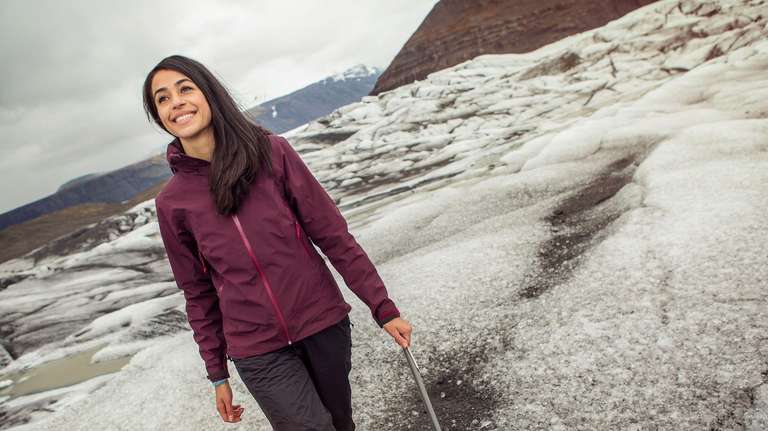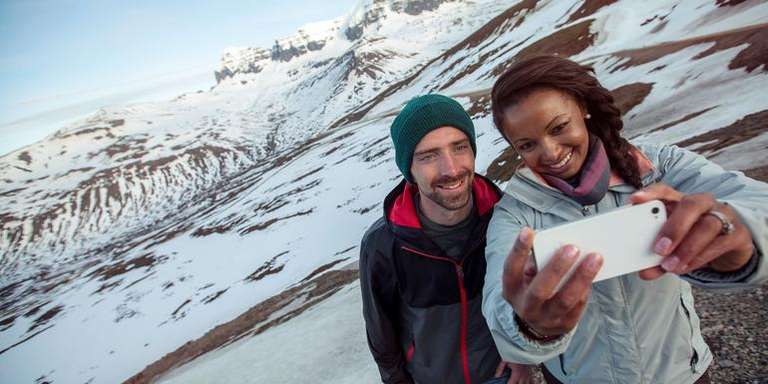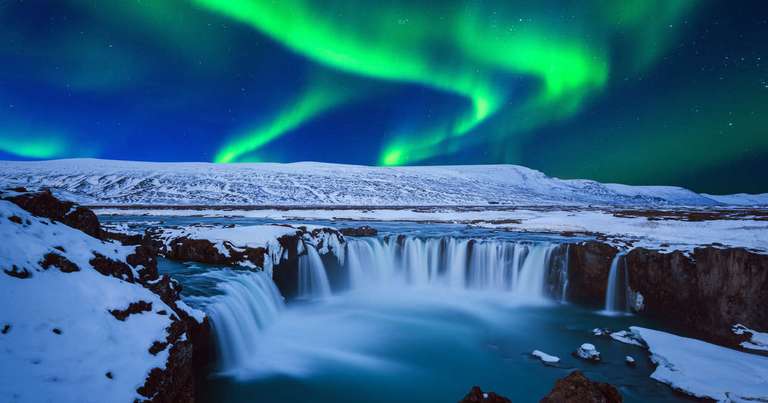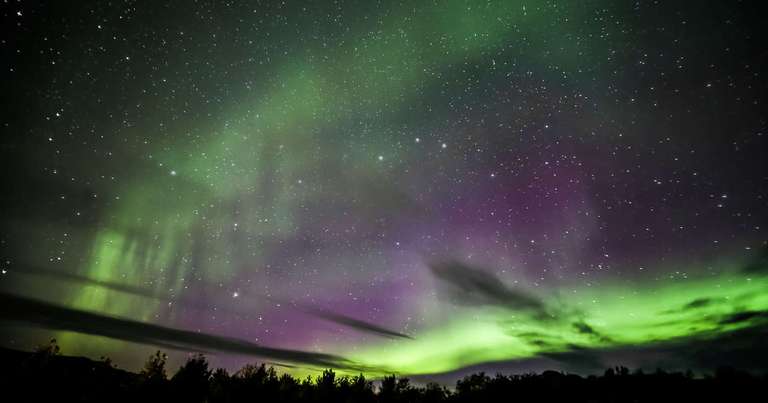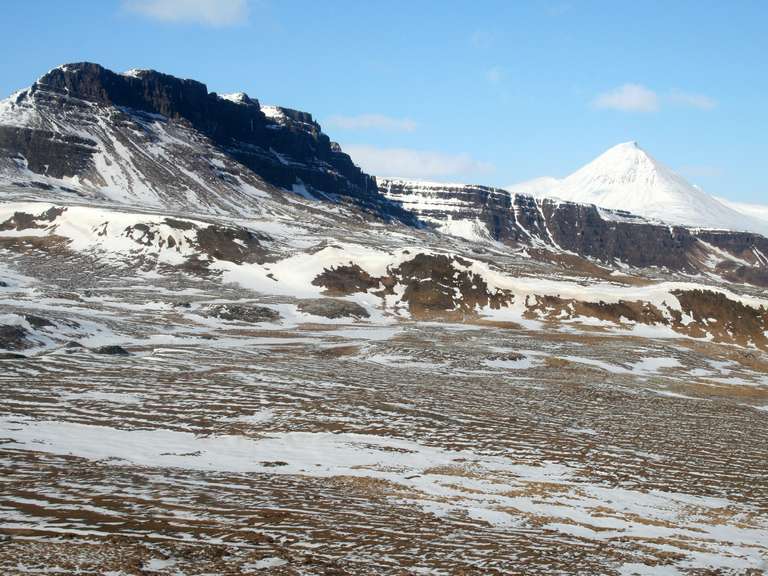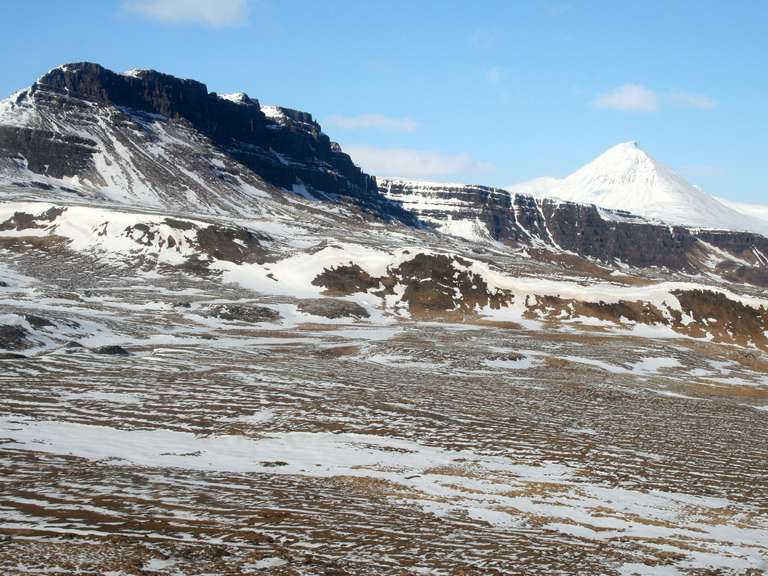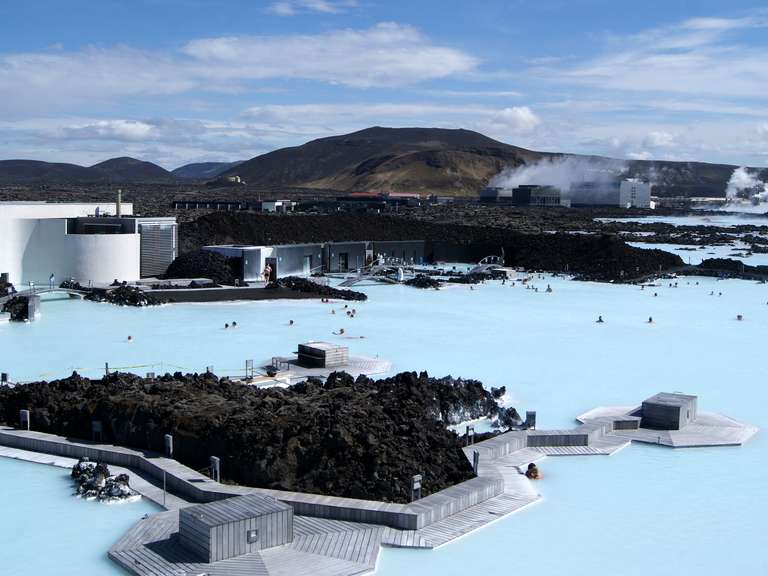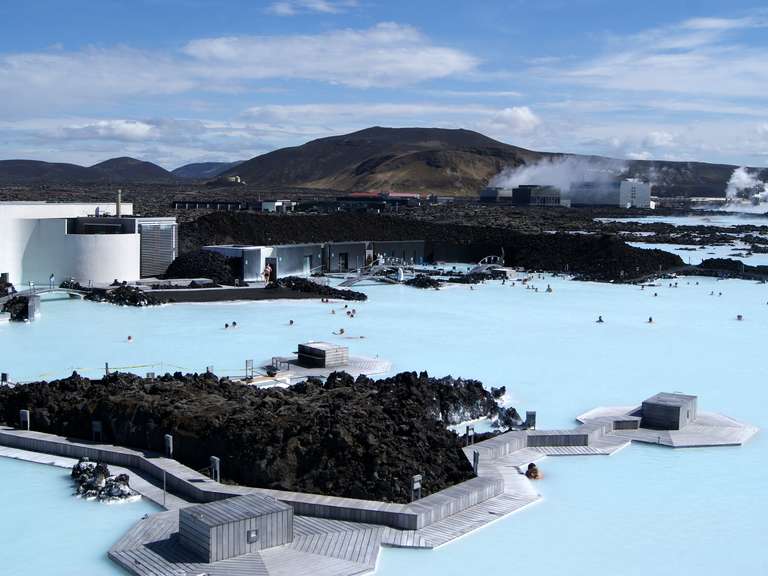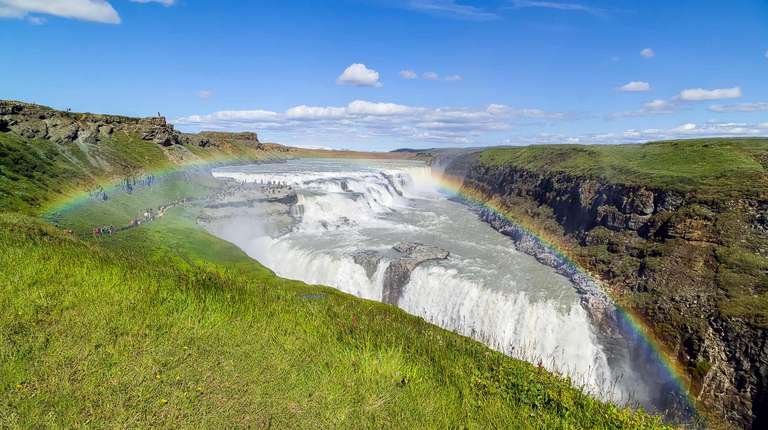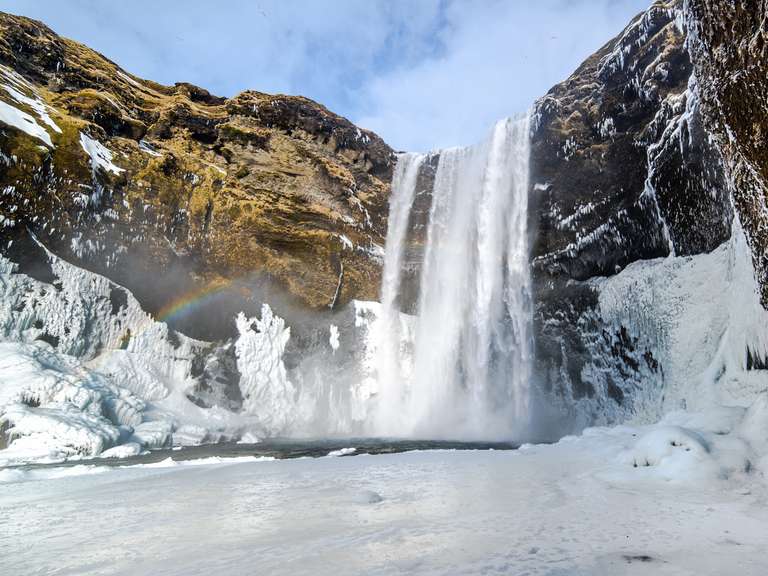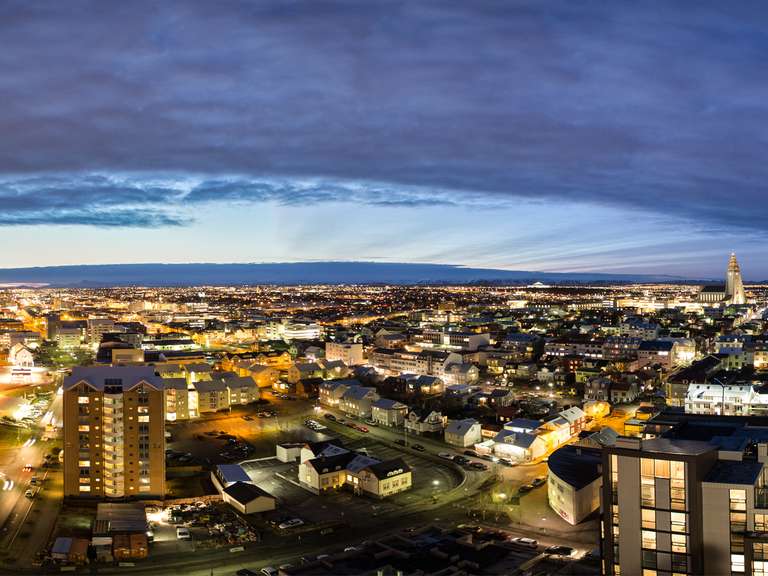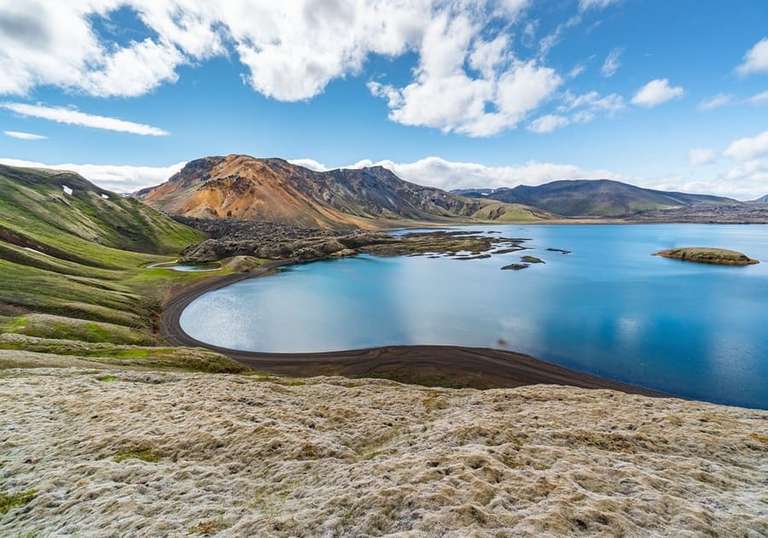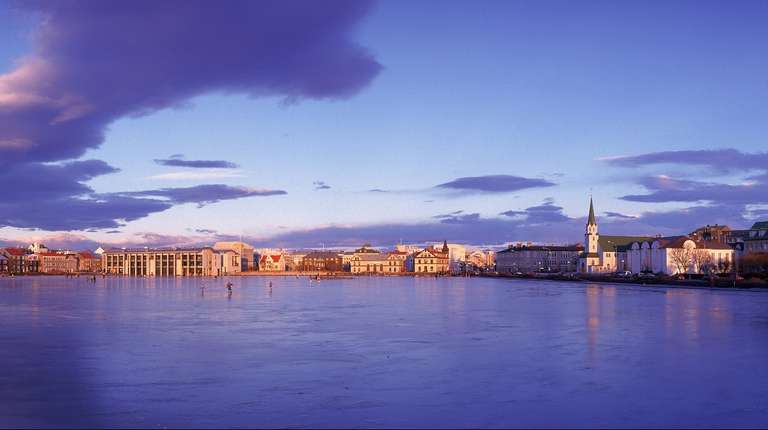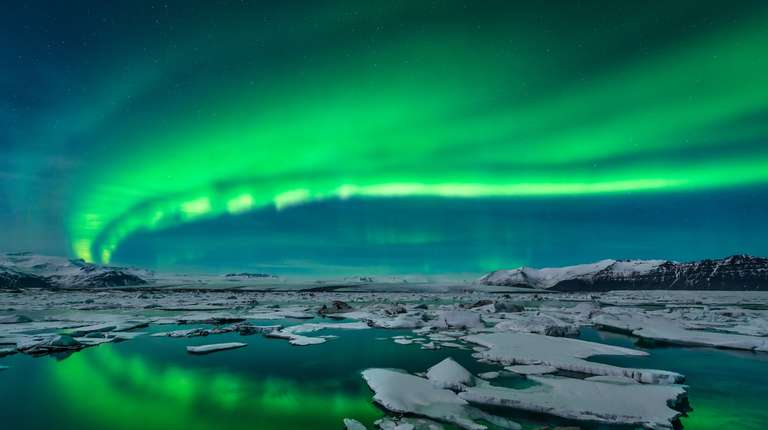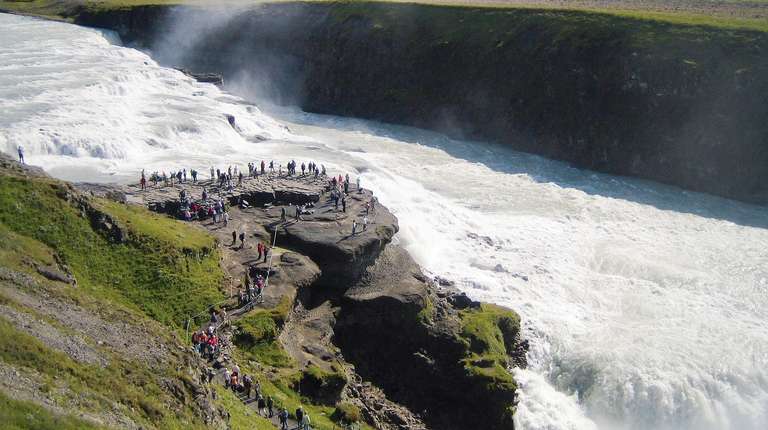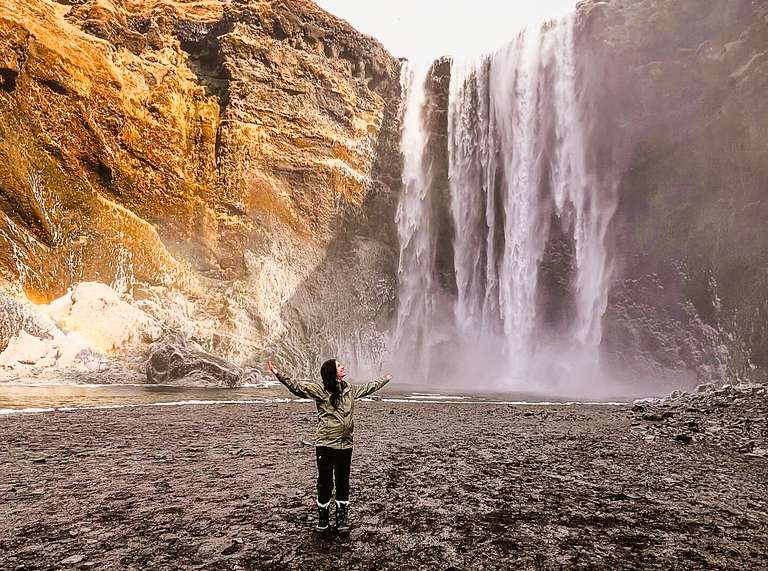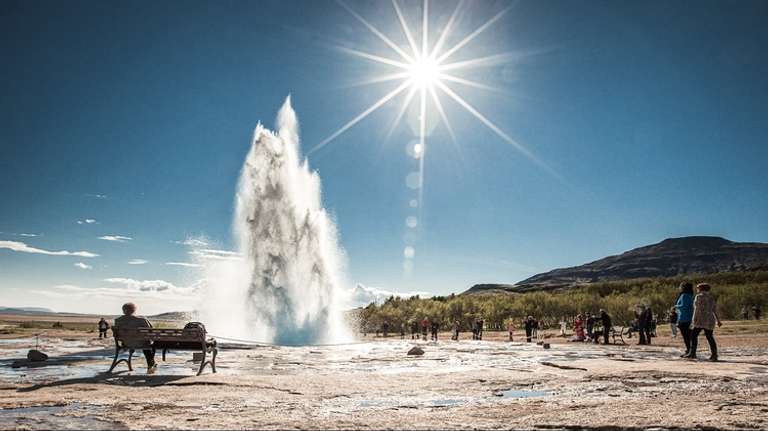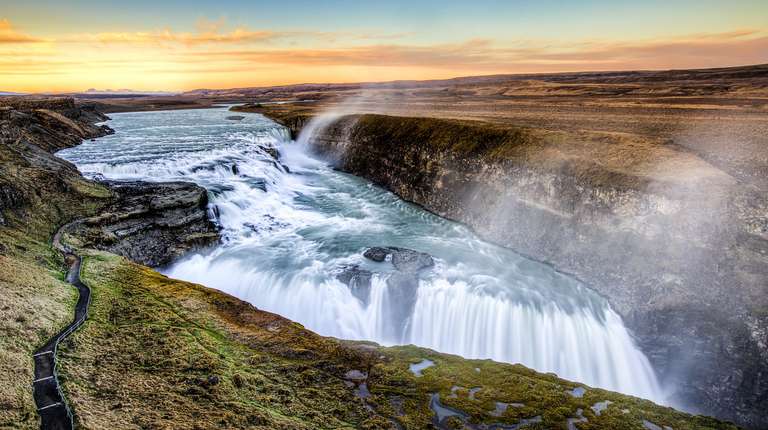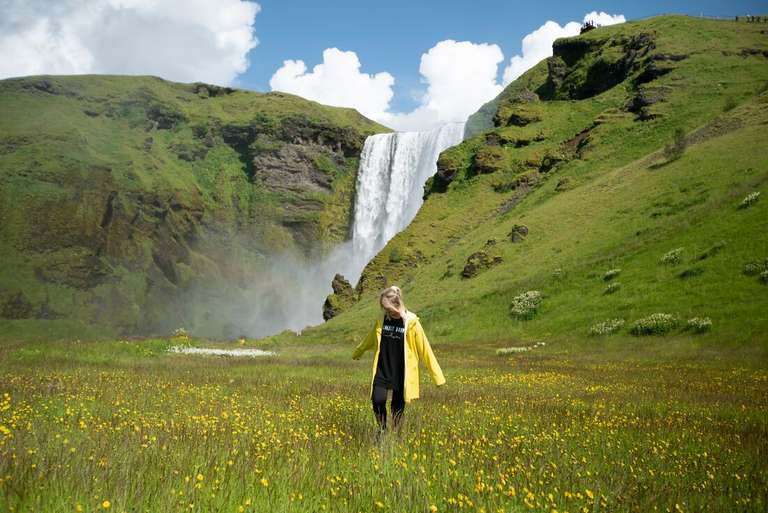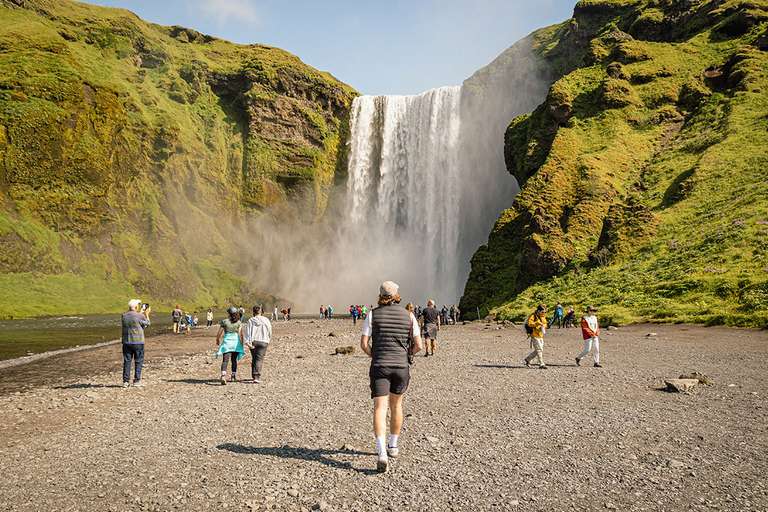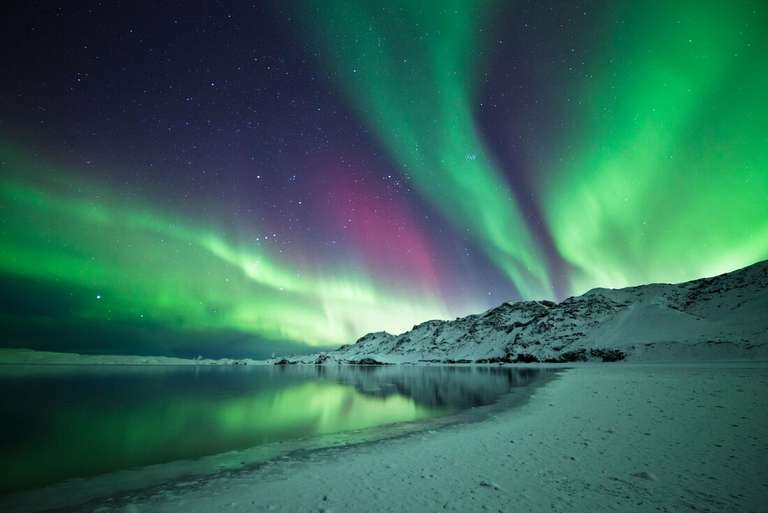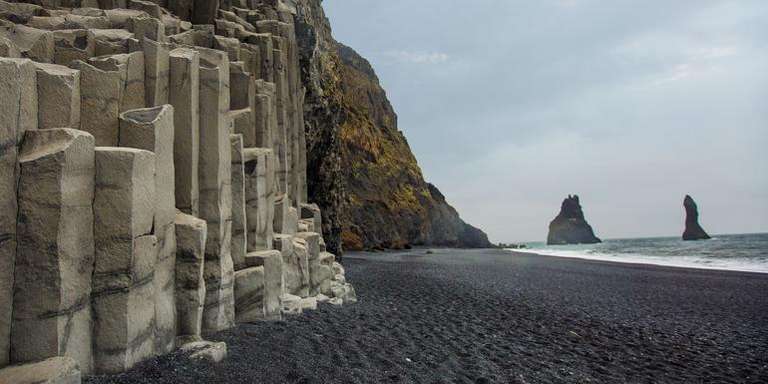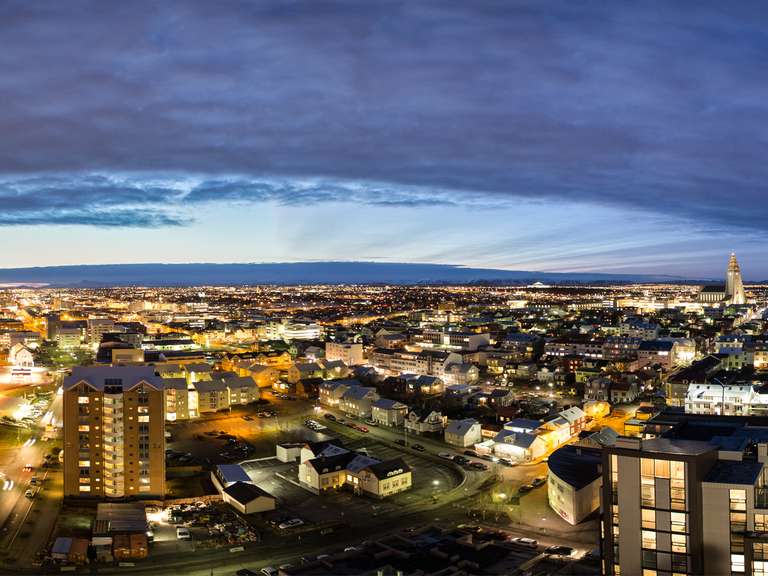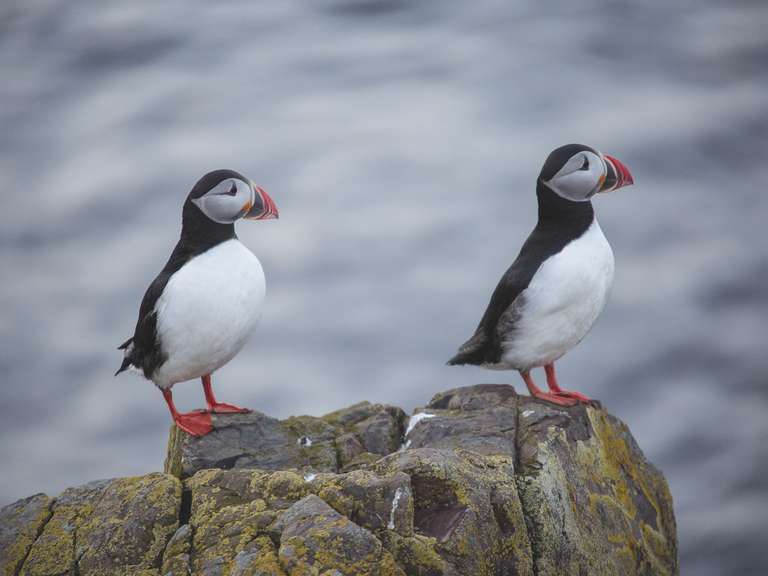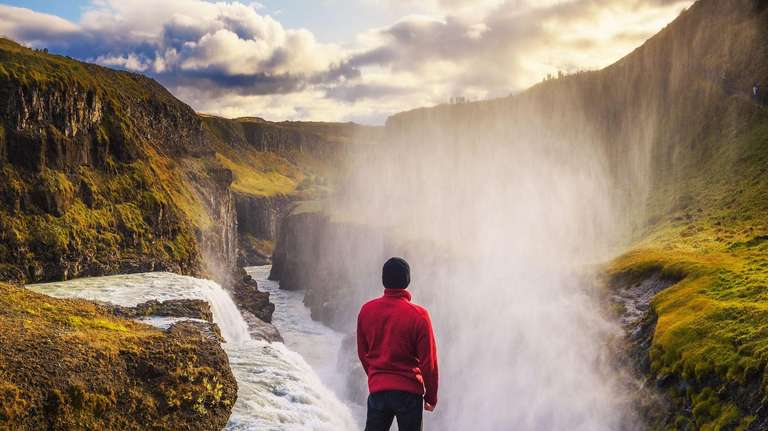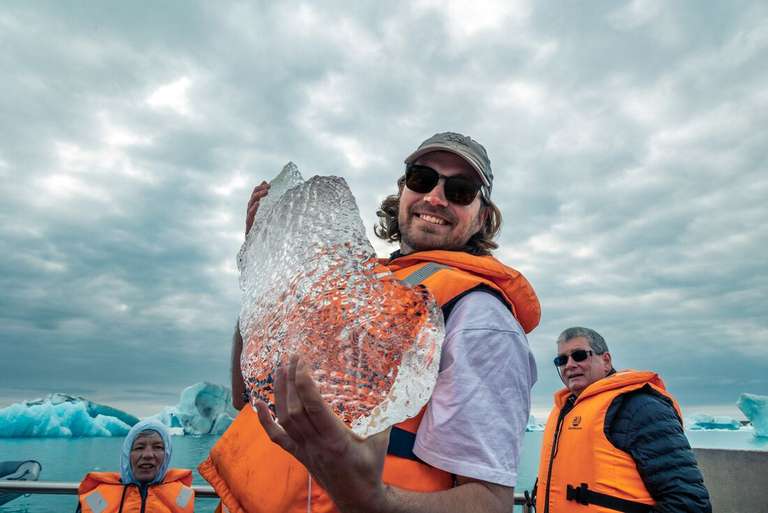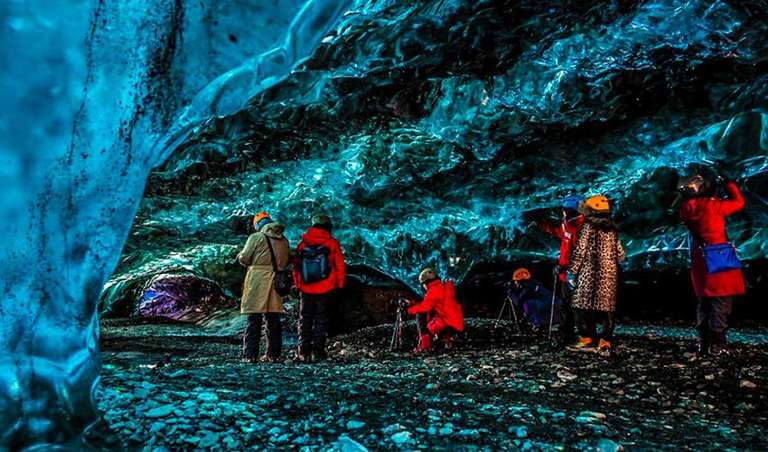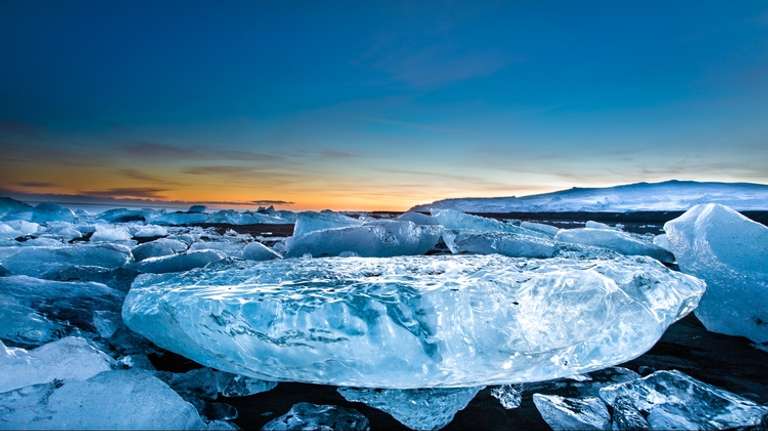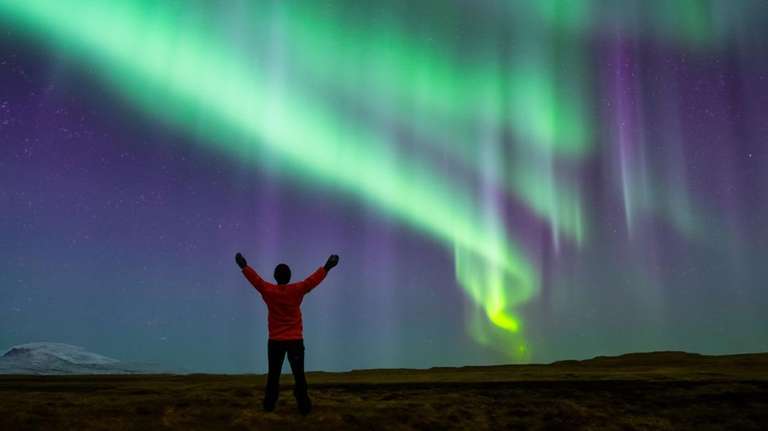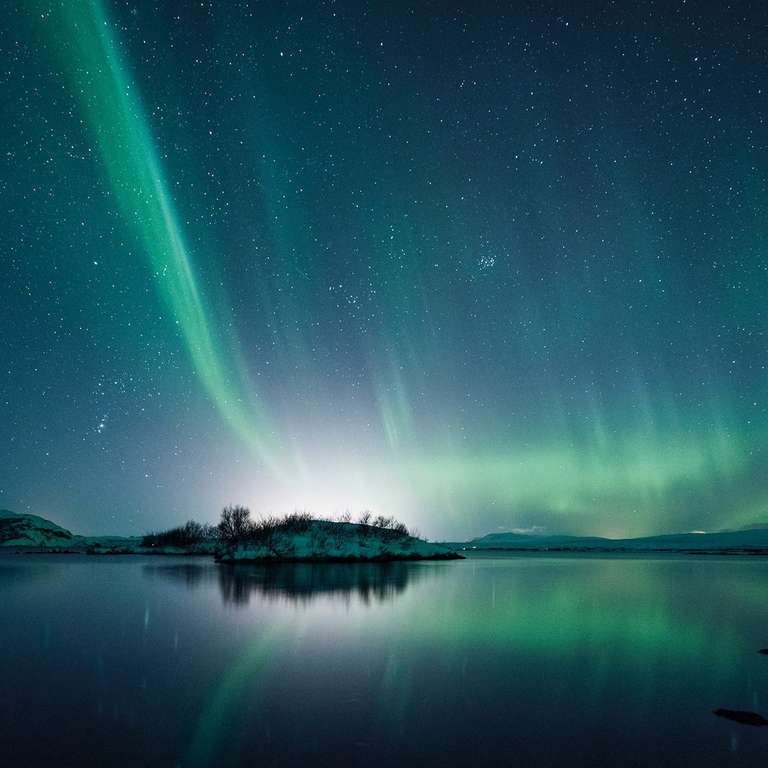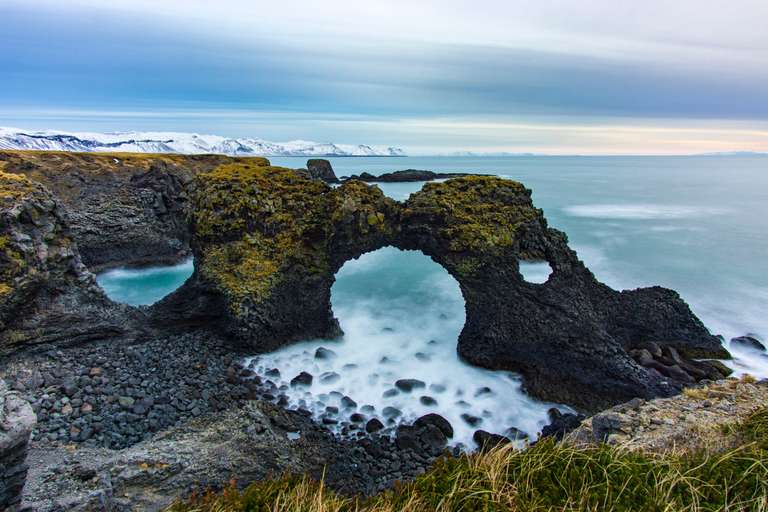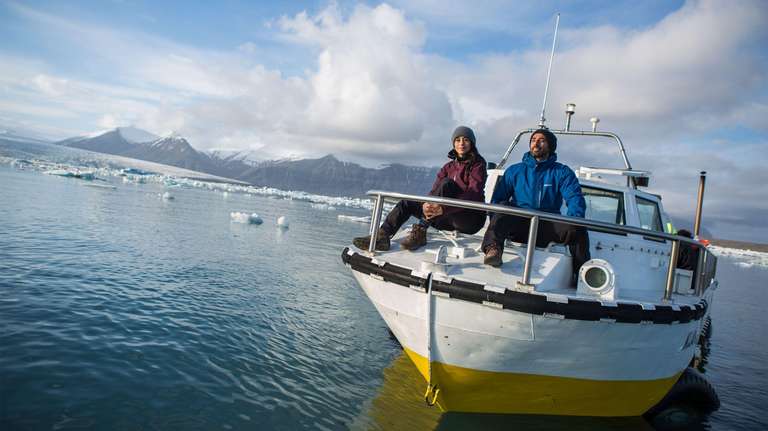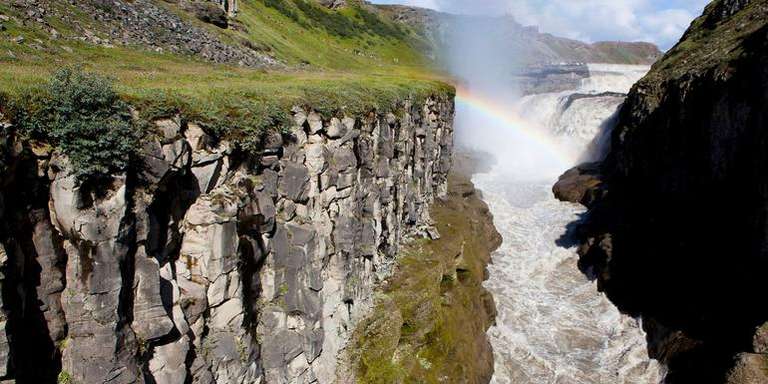Things to Do in Iceland

- Jane W
- From
- Jane W
- From
- Leslie E
- From
- Danine D
- From
1. Witness the Northern Lights

Situated at approximately 64 degrees north latitude, Iceland is one of the few prime vantage points for witnessing the Northern Lights. They are visible in Iceland between late August and early April. While this natural spectacle can be seen across the country, including the capital, Reykjavik, the best viewing experience can be had in North Iceland. Nestled within the "Northern Lights Belt," here, the aurora activity is at its peak. Venture into remote areas, far from light pollution, for more pronounced sightings. This captivating phenomenon is one of Iceland's must-see and visit sights.
Recommended locations:
- Jokulsarlon Glacier Lagoon is the best location for witnessing the enchanting Northern Lights in Iceland. Its rural setting affords the best conditions to see the aurora borealis while the glacier and the black sand of Diamond Beach add to the experience.
- Westfjords is located in the northwest region of Iceland. It falls within the Northern Lights Belt, sees more hours of darkness, and often has little to no cloud cover compared to other locations, which makes it the perfect spot to see the breathtaking aurora borealis.
- Thorsmork Valley is another good place to chase the Northern Lights, as its isolated location and towering mountain peaks act as natural shields against clouds and light pollution.
Best season: Since Iceland in winter has the least daylight hours, the peak winter months from November through February are considered the best season for witnessing the Northern Lights.
Insider tip: Some apps tell you when solar flares are at their highest, so even if you go to a place where Northern lights are seen and it's not "peak," you can still catch a glimpse! We did exactly that in this video at 7:09 while in Iceland. We used this app. One of the most incredible things our eyes have ever seen; it was like the earth's natural fireworks. — by Damon and Jo from Shut Up and Go
2. Wander Around Reykjavik
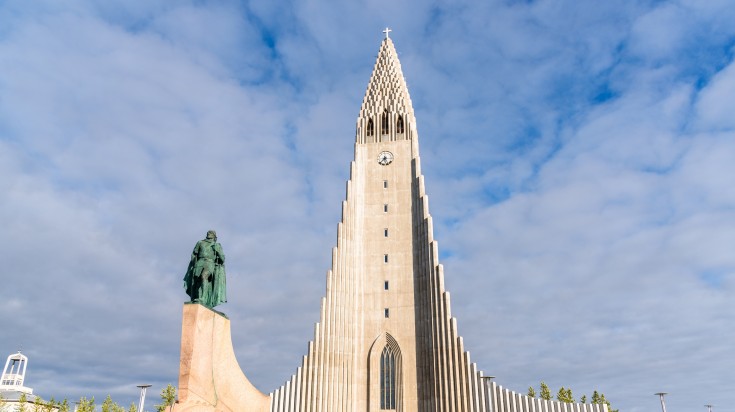
One of the best things to do in Iceland is to explore its capital city, Reykjavik, considering it is the first place you encounter after you land in this country. A sightseeing tour of Reykjavik exposes you to culturally and historically significant sites and museums that house a wealth of Icelandic heritage. While in the Icelandic capital, you can also explore its much-talked-about nightlife, where plenty of bars and clubs fuel your evenings with entertainment and vibrant energy.
Recommended attractions:
- Museums are abundant in Reykjavik, and the most notable among them is Perlan, an interactive nature museum that houses Iceland’s first planetarium and a real-life ice tunnel, amongst other replicas of the country’s natural formations. Another standout is the Aurora Reykjavík - The Northern Lights Center, offering a captivating multimedia exhibition of the mesmerizing Northern Lights. Check out the Saga Museum to learn more about Iceland’s heritage and Viking history.
- Historic and cultural landmarks abound in Reykjavik and offer a rich tapestry of the city's heritage. For your Iceland sightseeing tour, visit Hallgrimskirkja, a Lutheran church that affords panoramic city views from its observation tower. Stroll along Adalstraeti Street, Reykjavik's oldest street, to soak in the city's heritage. Marvel at the Falcon House a testament to Iceland's architectural legacy. And explore Iceland's Alþingi, the world’s oldest functioning Parliament.
- Bars in Reykjavik offer a vibrant and lively nightlife experience. The city boasts over 100 bars, many conveniently located along the bustling Laugavegur Street. By day, these venues often double as bistros, offering a casual dining experience, and as night falls, they become lively local bars.
Best season: Visit Reykjavik anywhere between the summer months of June and August, when the weather is suitable for the capital's popular walking tours.
Insider tip: Hailing a cab is one of Iceland's most expensive forms of transportation. When in Reykjavik, opt for the popular walking tours or hop on a public bus by downloading the Strætó app that lets you pay through Visa or Mastercard and includes a journey planner.
3. Tour the Golden Circle
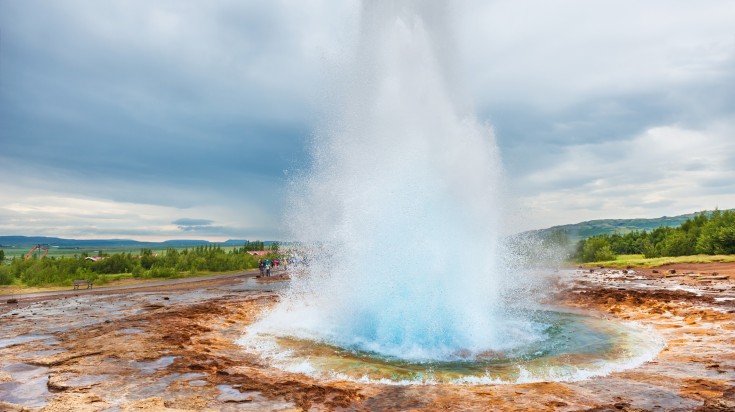
A trip to the Golden Circle, Iceland’s top tourist attraction, is a no-brainer when looking for things to do in Iceland. It includes the Unesco-listed Thingvellir National Park, Gullfoss Waterfall, and the Geysir Geothermal Area. It is approximately a 300-kilometer round-trip that can be completed in a day.
Recommended activities:
- Include snorkeling in the Silfra Fissure while on your Iceland adventure tour itinerary. This unique experience allows you to dive amidst the tectonic plates of North America and Eurasia.
- After you visit the Geysir Geothermal Area, go golfing on the Geysir Golf Course, right opposite the Great Geysir.
Best season Visit the Golden Circle during spring, summer, and fall months, that is, anywhere between April and October, for milder temperatures and snow-free conditions.
Insider tip: Although you can visit the Golden Circle Area free of charge, parking lots P1, P2, and P5 in the Thingvellir National Park take a service fee. Try to avoid using ATMs as they have a 20% surcharge.
4. Embark on a Ring Road Self-Driving Trip
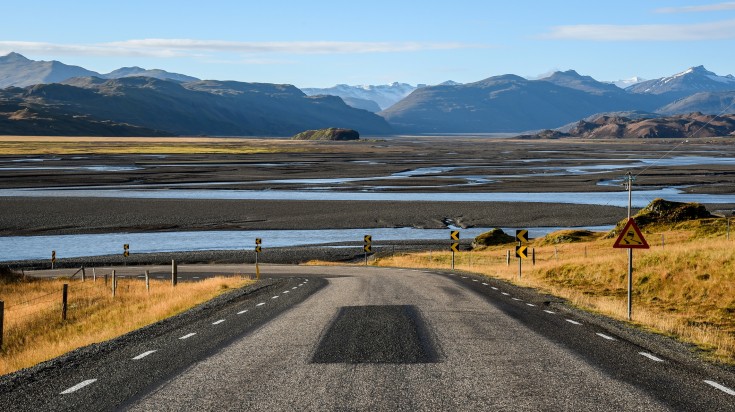
Iceland is famous for its self-driving road trip along the Iceland Ring Road (Route 1). Covering the 1,332-kilometer stretch of this route that loops the entire island takes at least seven days and can easily be stretched to 10 days. If you cannot quite manage 7–10 days, a short South Iceland trip along the route is a great option that takes 4–5 days, with the main attraction being the Golden Circle. Check out our 7 days in Iceland itinerary to plan an unforgettable road trip in Iceland.
Recommended stops:
- Diamond Beach is a must-visit black-sand beach along the Ring Road, known for its glistening icebergs and excellent seal and orca whale spotting opportunities. Located in Southeast Iceland, it is approximately a four-hour drive from Reykjavik, making it a convenient stop on your Ring Road adventure.
- Lake Myvatn is a shallow waterbody in North Iceland, situated in an active volcanic area. It is a geothermal wonderland that is easily accessible from Reykjavik and Akureyri, featuring pseudocraters and the relaxing Myvatn Nature Baths.
- Skogar is a charming village with just 25 inhabitants and home to the majestic Skógafoss waterfall and the Skogar Museum.
Best season: The summer season, from early April to late October, is considered the best season for driving the Ring Road due to less volatile weather conditions and little to no chances of road hazards.
Insider tip: The best tip for driving the Ring Road is you shouldn't feel compelled to book a 4x4 or SUV, especially if you're mainly sticking to the route and the weather is clear. During the few times that we went off-road to, let's say, Seljavallalaug Pool, the dips in the road were manageable as long as you drove slowly and took the potholes at an angle. — by Will from Going Awesome Places
5. Hike the Thorsmork Valley

Thorsmork Valley, or the Valley of Thor, is a remote mountain ridge tucked between Tindfjallajökull, Mýrdalsjökull, and Eyjafjallajökull glaciers. It boasts many beautiful valleys, including popular ones such as Husadalur, Langidalur, and Basar. The trails leading to Thorsmork are renowned for their breathtaking scenery and versatility. Within this valley, you will discover various vantage points, including the renowned "Panorama Point," offering a sweeping 360-degree perspective of the surrounding landscapes. Whether on a solo Iceland trip or in a group, embarking on a guided hike in Thorsmork Valley is a must-do activity.
Recommended trails:
- Laugavegur trail stands as one of the most renowned hiking routes in Iceland, drawing adventurers from across the globe. This 55-kilometer trail spans from the Landmannalaugar geothermal springs to the captivating Thorsmork Nature Reserve. Over the course of three to four days, hikers will experience a journey of moderate difficulty that rewards them with views like that of the Álftavatn Lake, vibrant rhyolite mountains, and geothermal hot springs.
- Fimmvörðuháls trail starts at the iconic Skogáfoss waterfall in Skogar and ends in the enchanting Thorsmork Valley. This 25-kilometer trail takes eight to 12 hours to complete. Be prepared for a high level of difficulty as the trail takes you past two of the world's youngest mountains, Magni and Móði. Along the way, you will be treated to the sight of no less than 26 waterfalls, including the majestic Skogafoss and the captivating Skalabrekkufoss.
Best season: Since the F-roads that lead to the Thorsmork Valley are closed for the winter, the best season to visit this valley is during summer, which extends from June to August.
Insider tip: Make sure you let others know about your hiking plans before heading out. Let them know when you plan to leave and offer an approximate time for your return. In the slim chance that you run into trouble, it's good to know that someone out there has your back. — by Kevin Wagar from Wandering Wagars
6. Spot Atlantic Puffins

Iceland is a breeding colony for 60% of the world’s Atlantic puffin population. Each fall, the country hosts two million nesting pairs and seven million individual puffins, making it the most common type of bird found in Iceland. The island has over 1.1 million puffin burrows buried beneath the soil on the chain of islands.
Recommended spotting areas:
- Heimaey in Westman Islands is home to the world's largest Atlantic puffin breeding colony, with over a million pairs nesting annually. Visitors can spot puffins on the island itself and through boat tours.
- Latrabjarg in Westfjords is a hidden gem for puffin enthusiasts and nature lovers. Often overlooked due to its remoteness, it boasts one of the world's most spectacular puffin cliffs, where you can spot Atlantic puffins in their millions during the breeding season.
Best season: May to mid-August is considered puffin season in Iceland and is the best time to spot these birds.
Insider tip: Head to the southern tip of Heimaey in the Westman Islands, as it is one of the most reliable places to spot puffins in a large number.
7. Take a Dip in Geothermal Baths and Hot Springs

The Land of Ice and Fire is equally renowned for its geothermal baths and hot springs. Nestled amidst its stunning landscapes are nearly 50 natural hot springs and numerous geothermally heated public pools. These natural wonders offer a unique opportunity to unwind and rejuvenate in the soothing warmth of mineral-rich waters. Take on an Iceland hot springs tour to relax in between your trip.
Recommended geothermal baths and hot springs:
- The Blue Lagoon is Iceland's most popular geothermal spa, drawing over 700,000 visitors annually. The main draw is the rejuvenating silica mud. This milky-blue, mineral-rich water is renowned for its healing properties. Visitors can relax in its therapeutic warmth while surrounded by Iceland's rugged and otherworldly landscape.
- Myvatn Geothermal Baths are centered around a large lagoon with temperatures ranging from 36°C to 40°C. What makes this location special is the mineral-rich water, particularly sulfur, which is believed to provide therapeutic benefits for respiratory and skin conditions. Positioned in the Mývatn region, these baths also offer stunning views of the surrounding volcanic landscape.
- The Secret Lagoon, known locally as Gamla Laugin, is also one of Iceland's popular hot spring destinations. What makes this hot spring unique is its historical significance as the oldest swimming pool in Iceland. Additionally, it offers a more budget-friendly option compared to larger geothermal spas.
Best season: Because Iceland faces colder temperatures year-round, the best season for the geothermal baths and hot springs is also year-round.
Insider tip: If you visit the Blue Lagoon on your way to or from the airport, they have a free luggage storage area in the parking lot where you can check your bags. The lockers in the changing rooms are small and can only store a small backpack or bag. Be sure to pack a separate backpack with your suit, flip-flops, and toiletries to take with you. — by Laura from Savored Journeys
8. Take on a Glacier Hiking and Ice Caving Expedition

Iceland's location in the North Atlantic region offers remarkable glacier hiking and ice-caving expedition opportunities. Glaciers cover about 10% of Iceland's total land area; incidentally, the country is home to the largest glacier in Europe. With so many glaciers, Iceland also boasts many ice caves formed by melting water, typically from glacial rivers or geothermal heat. The water carves intricate tunnels and caves within the glacier's ice, creating spectacular formations. Ice-cave tour or a glacier tour in Iceland draws adventurers from around the world.
Recommended glaciers and ice caves:
- Vatnajökull is the largest glacier in Iceland and Europe by volume, covering approximately 8,100 square kilometers. Located within Vatnajökull National Park, this glacier boasts numerous ice caves, crevasses, and rugged terrains, making it a diverse destination for hiking. The Crystal Ice Caves and the Blue Ice Caves beneath Vatnajökull are renowned for their spectacular blue ice formations. This glacier is known to be one of the 10 best glaciers in Iceland.
- Langjökull is the second-largest glacier in Iceland, covering an area of about 953 square kilometers. Situated in the west-central part of Iceland, Langjökull offers accessible glacier hiking opportunities, and it is one of the most frequently visited glaciers due to its proximity to Reykjavik. It is also known for the Langjökull Ice Tunnel, a beautiful man-made tunnel carved into the glacier.
- Crystal Ice Cave in Vatnajökull National Park is one of Iceland's most famous ice-caving destinations. This ice cave is formed by the melting water of the Vatnajökull Glacier, which carves intricate tunnels and chambers within the glacier's ice. This cave is famous for its breathtaking blue ice, a result of the way light interacts with the dense glacier ice, scattering and reflecting blue wavelengths.
Best season: The best season for glacier hiking and ice cave expeditions in Iceland is typically during the winter months, from November to March, when the cold temperatures freeze the landscape, making it safer for exploration.
Insider tip: For a truly magical experience, consider booking an early morning ice cave tour. The soft morning light filtering through the ice during winter creates a serene and otherworldly atmosphere. Plus, the caves are often less crowded in the early hours, allowing for a more intimate encounter with the ice formations.
9. Fly Over Active Volcanoes on a Helicopter Tour

Iceland is located on the Mid-Atlantic Ridge, a tectonic plate boundary, making it a hotspot for volcanic activity. Helicopter tours allow you to witness the raw power and beauty of Iceland's active volcanoes from the air and provide breathtaking views of the volcanic landscapes, including steam vents, lava flows, and colorful mineral deposits.
Recommended volcanoes:
- Eyjafjallajökull gained worldwide fame with its 2010 eruption, which disrupted air travel across Europe. Located in South Iceland, beneath the Eyjafjallajökull glacier, this stratovolcano has a history of explosive eruptions, which you can witness on a fly-over. Take in the breathtaking views of the caldera and the surrounding landscape, including the effects of the 2010 eruption.
- Hekla is one of Iceland's most active volcanoes, with numerous eruptions throughout history. It is situated about 110 kilometers (68 miles) from Reykjavik in South Iceland. Helicopter tours show Hekla's rugged terrain, lava fields, and craters, showcasing its volcanic activity.
- Bárðarbunga Volcano is a stratovolcano and part of the Vatnajökull volcanic system. It had a significant eruption in 2014-2015, Iceland's largest in over two centuries. Fly-over tours offer a unique perspective of the Bárðarbunga caldera and the surrounding volcanic landscape, showcasing the effects of the recent eruption.
Best season: The best season for flying over active volcanoes on helicopter tours in Iceland is typically during the summer, from June to August, when the weather is stable and predictable.
Insider tip: For a truly immersive experience, inquire about tours that combine volcanic flyovers with on-ground exploration of recent lava fields. This allows you to walk on freshly solidified lava and observe volcanic formations up close.
For more information, go through our guide on popular volcanoes in Iceland.
10. View the Midnight Sun

The midnight sun is a captivating natural phenomenon that allows visitors to witness the extraordinary beauty of Iceland's landscapes under continuous daylight. This natural phenomenon occurs during summer. As the sun never fully sets below the horizon during this time, the beauty of Iceland's natural landscapes is enhanced, with soft surreal lights illuminating the glaciers, waterfalls, geysers, fjords, and volcanic features.
Recommended spots:
- Akureyri, often referred to as the ‘Capital of the North,’ is located in northern Iceland and is one of the best places to visit in Iceland to view the midnight sun. Akureyri's Botanical Garden, Akureyri Church, and the picturesque Eyjafjörður fjord provide excellent settings for viewing the phenomenon from late May to early August.
- Grímsey is a small island located in the Arctic Circle, approximately 40 kilometers (25 miles) off the northern coast of Iceland. Its extreme northern latitude (66.6°N) makes it one of the best places in Iceland to view the midnight sun. The island's stark and rugged landscapes, coastal cliffs, and views of the Arctic Ocean offer a unique and picturesque setting for viewing the midnight sun. Grimsey's small community embraces the midnight sun with cultural events and celebrations, giving visitors a taste of local traditions during this extraordinary time.
Best season: The best season for viewing the midnight sun in Iceland is around the summer solstice, which is from May through July when the earth’s axis tilts towards the sun and the daylight hours extend dramatically.
Insider tip: Continuous daylight can disrupt your sleep schedule, so consider packing sleep aids such as an eye mask. Also, inquire about the availability of blackout curtains in your room before booking your accommodation.
11. Spot Whales in the North-Atlantic Waters

Whale-watching in the North-Atlantic waters off Iceland provides a once-in-a-lifetime opportunity to witness these gentle giants in their natural habitat. You can spot minke, humpback, and even blue whales in Iceland. Sightings of white-beaked dolphins, harbor porpoises, and orcas are also common.
Recommended destinations:
- Húsavík, located in northern Iceland, is often referred to as the ‘Whale Watching Capital of Iceland. The town's strategic location in Skjálfandi Bay offers a rich feeding ground for whales and attracts a variety of whale species. Numerous tour operators in Húsavík provide a range of tours, including traditional whale-watching boats and high-speed RIB (rigid inflatable boat) excursions.
- Reykjavik, Iceland's capital city, offers convenient access to whale-watching tours from its Old Harbor. The Faxaflói Bay, just off the coast of Reykjavik, is home to various marine life, making it an excellent location for whale-watching. Humpback and minkewhales are frequently spotted in these waters.
Best season: The best season for whale-watching tours in Iceland is typically from April to October, with the peak season occurring during the summer months of June to August. These months offer milder weather conditions and longer daylight hours, making it an ideal time for whale-watching excursions in Icelandic waters.
Insider tip: If you want a more adventurous whale-watching experience, opt for a RIB (rigid inflatable boat) tour. These smaller, faster boats can get closer to the whales and provide an exhilarating ride.
12. Ride an Icelandic Horse
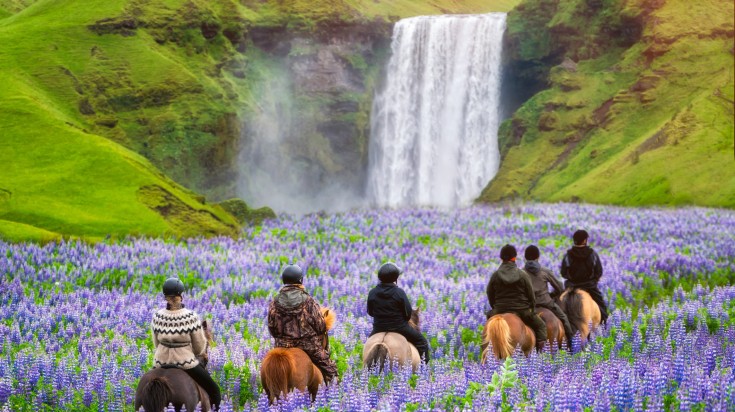
Horseback riding expeditions in Iceland are a fantastic way to explore the country's spectacular landscapes and connect with its equestrian traditions. Horseback riding is a popular activity in Iceland, and the Icelandic horse, known for its sturdy build and unique gaits, is the breed most commonly used for these expeditions. Explore diverse landscapes, including volcanic terrain, lava fields, lush meadows, and scenic coastlines, on horseback.
Recommended destinations:
- The Golden Circle, a popular tourist route in southwestern Iceland, offers excellent horseback riding opportunities. Here, you can explore the geothermal wonders of Geysir and Strokkur, visit Þingvellir National Park, and ride through scenic landscapes.
- Located in northern Iceland, Skagafjörður Valley is known for its strong equestrian traditions. This region is renowned for horse breeding, and riders can explore lush valleys, rivers, and historic sites.
- The South Coast of Iceland offers horseback riding with views of iconic landmarks such as Seljalandsfoss and Skogafoss waterfalls. You can also ride along black sand beaches.
Best season: The best season for horseback riding expeditions in Iceland is typically during the summer, from June to August. This period offers the most favorable weather conditions, with milder temperatures and longer daylight hours.
Insider tip: For a more rugged and remote experience, consider a horseback riding expedition in the Icelandic Highlands. These tours may require more advanced riding skills but offer incredible, untouched landscapes.
13. Admire the Waterfalls

Iceland boasts over a staggering 10,000 waterfalls, making it one of the top attractions for tourists. Many of Iceland's glacial waterfalls are surrounded by unique geological features, such as basalt columns, lava formations, and dramatic canyons that add to the waterfalls' overall appeal and visual interest.
Recommended waterfalls:
- Skógafoss is one of Iceland's largest and most beautiful waterfalls in Iceland. Located in the southern part of Iceland near Skógar, it plunges 60 meters (197 feet) over a width of 25 meters (82 feet). The falls create a constant mist, often forming vivid rainbows on sunny days. Visitors can walk right up to the waterfall's base to experience its power.
- Seljalandsfoss is a waterfall situated along the southern coast of Iceland, near the Ring Road, famous for its unique feature—visitors can walk behind the waterfall. The waterfall drops approximately 60 meters (197 feet) from the cliff above, and a trail allows you to explore the cave-like space behind the cascading water. The experience is particularly enchanting during the golden hours of sunset.
- Dynjandi (Fjallfoss) is a series of waterfalls located in the remote Westfjords region in northwestern Iceland, with the largest and most impressive being Dynjandi itself. It plunges approximately 100 meters (328 feet) over a rocky cliff, creating a majestic display of cascading water. The waterfall is surrounded by lush greenery and is often considered one of the hidden gems of Iceland's natural wonders.
Best season: The best season for viewing waterfalls in Iceland is typically during summer, from June to August, with milder temperatures, creating comfortable conditions for outdoor exploration.
Insider tip: Try exploring lesser-known waterfalls such as Gljufrabui and Gluggafoss, where you can experience the grandeur of Icelandic glacial waterfalls without having to endure too much of a crowd and the inconvenience caused by tourist traffic.
Iceland's captivating natural wonders and diverse landscapes offer travelers an array of places to explore and activities to experience.
Want to customize your Iceland itinerary to include all of the things to do and destinations mentioned above? Fill out our customized Iceland trip form. For more information, go through our Iceland travel guide.

